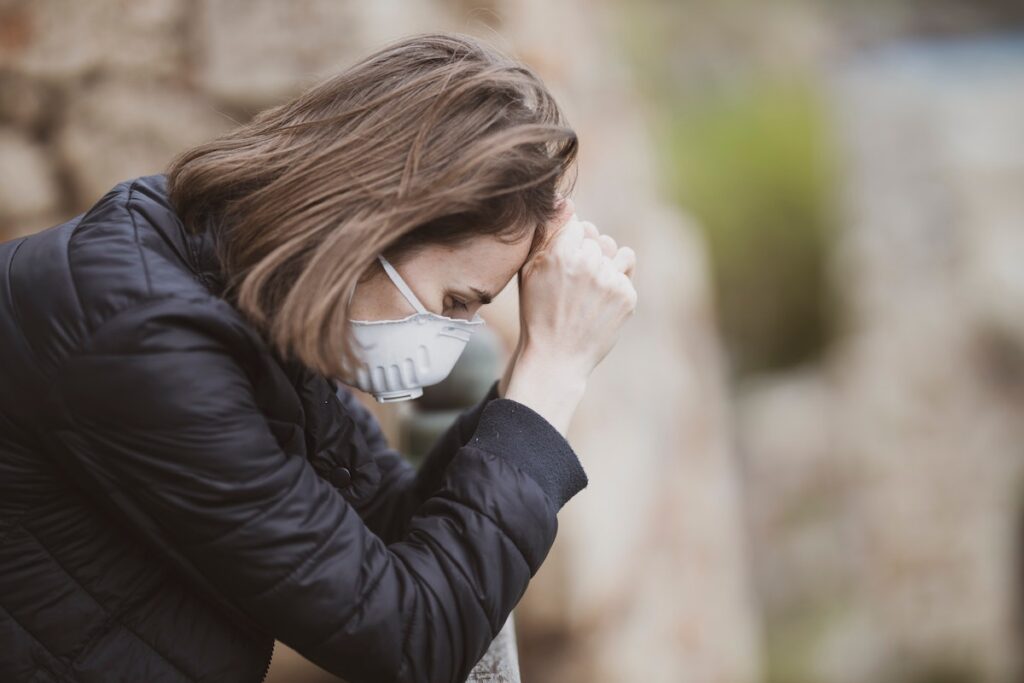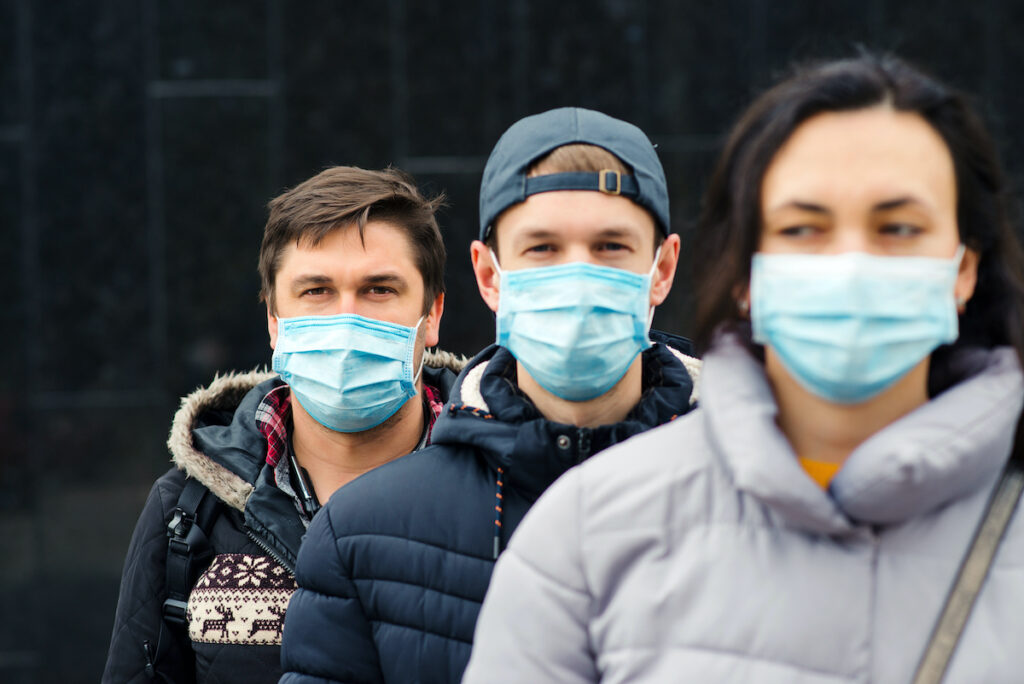
It’s not a surprise that the COVID-19 virus has caused devastation globally. To date thousands of people have contracted COVID-19, with sadly numerous deaths on a global scale. The impact of an unrelenting effect on healthcare systems has been felt across the world, and we, all healthcare professionals in clinical practice, are witnessing the impact on our teams. The pressure of caring for people with numerous critical presentations, sadly all too frequently dying.
Many mental health liaison teams developed staff support hubs during the height of the pandemic, while hospital trusts were aware of the potential impact on the wellbeing of the workforce. This resulted in investments to create better break facilities, and safe spaces which really allowed rest and recuperation (NHS Employers, 2021). The impact of long hours, lack of breaks, staffing problems and responsibility to work in extreme conditions wearing full PPE was vast.
Many researchers strived to understand the consequences of the pandemic and conducted studies to capture the mental health burden on frontline health workers. Hence, this systematic review and meta-analysis wishes to examine the prevalence of psychiatric symptoms among health workers during the COVID-19 pandemic (Marvaldi et al, 2021).

COVID-19 pandemic is often associated with pressure, burnout and grief among frontline health workers.
Methods
The review and meta-analysis was conducted in accordance with the PRISMA statement, the recommended tool for carrying out systematic reviews (Page et al 2020). Two databases were searched (Pubmed and Psycinfo) looking for relevant studies that specifically related to the COVID-19 pandemic and the prevalence of mental health symptoms among health workers. Health workers included were nurses, physicians, care givers and nursing assistants; while mental health symptoms included anxiety, depression, suicidal ideation, stress, trauma and sleep problems.
All studies included were published up to and including October 8th 2020 in peer-reviewed journals and explored the prevalence of mental health symptoms in healthcare staff using validated scales.
The exclusion criteria included duplicated publications, studies not providing original results, studies examining the impact of quarantine, literature reviews, qualitative studies and meta-analyses.
For the meta-analysis the outcome measure was that the studies included clearly defined outcomes of poor mental health, which included prevalence of disorders including depression, anxiety, sleep problems and trauma.
All studies were assessed following criteria extracted from the Agency for Healthcare Research and Quality (AHRQ), the NIH’s quality assessment tool for Observational Cohort and Cross‐Sectional Studies, and the Crombie’s items (Crombie 1996; NIH 2020; Zeng et al. 2015). The authors also assessed the heterogeneity among studies using the Cochrane Q test, and further explored the findings with subgroup analyses and meta-regressions.
Results
A total of 414 studies were screened and 70 studies were included in the systematic review. The studies included a total of 101,017 participants across 19 countries, with much of the research being undertaken in China (n=30).
Of the 70 studies, 61.4% (n=43) included both physicians and nursing participants with, 21.4% (n=15) just physicians and 17.4% pertaining to just nursing staff.
The meta-analysis was performed on the whole sample and focused on studies that were of higher quality, which included 25 for depression, 22 for anxiety and 9 for acute stress/ trauma related (PTSD) and 10 for sleep disorders.
- Depression (including depressive symptoms) prevalence found in 31.1% in a total of 68,030 participants
- Anxiety disorders and symptoms were found in 30% of 51,942 participants
- Post-Traumatic Stress Disorder (PTSD) and acute stress accounted for 31.4% of 25,412 participants
- Sleep disorders featured in 44% of 12,428 people with an increase in sleep problems throughout time, 22.8% January-February and 56.8% March to May; suggesting that the unrelenting nature of workload had an accumulative effect
- Only 3 of the 70 studies reported on co-morbidity, demonstrating that there was some evidence for prevalence of insomnia and acute stress, insomnia plus depression and acute stress and depression.

Half of the healthcare workers included in this review met the criteria for depression, anxiety, PTSD/acute stress disorder or sleep disorders, which is a major concern for future health crises.
Conclusions
The prevalence of mental health concerns amongst care givers within this review is significant, 1 in 2 participants met the criteria for a diagnosable mental health condition. This learning clearly demonstrates the need for early intervention and preventative measures to enable improved staff wellbeing in healthcare.

Early intervention and preventative measures are needed in preparation for the next pandemic to protect the mental health of those on the frontline in healthcare.
Strengths and limitations
The review was relevant for the timeframe during which it was undertaken, and aimed to highlight a major health concern during the pandemic focusing on frontline healthcare staff. Significant research has been ongoing since the first lockdown, and the authors not only add to the literature but support existing findings. The results highlight the potential level of exhaustion experienced by the healthcare staff during the pandemic, leaving question marks for their ongoing mental health and lived experience of depression, anxiety and burnout among clinicians. Longitudinal and qualitative designs are essential to determine the real impact, as well as global-scale of research.
One of the limitations is that the studies included in this review rarely looked at comorbidity, although often mental health symptoms are not experienced independent. Given that a large amount of the studies came from China, the findings may not be generalisable to the wider population across the world. The level of heterogeneity indicates that replication in the post-pandemic world is needed.

The studies included in the systematic review missed the opportunity to look at co-morbidity, a potential key element of lived experience among healthcare staff.
Implications for practice
The prolonged nature of this pandemic, not yet concluded, where healthcare staff have born witness to significant mortality, distressed families not able to be present for their relatives last moments, prolonged staffing crises and a lack of human contact (working wearing full PPE) is likely, yet to be comprehended. With 1 in 2 healthcare staff in this review suffering the consequences in the form of poor mental health, it is hard to know what the long-term effects might be.
This study – and many others on the mental health of healthcare workers – can open and extend a dialogue about collective support and care. We often hear the term ‘self-care’ where the responsibility of looking after our wellbeing is placed on us, the devoted workers. However, there should be steps by the services we work for to provide a safe space for everyone in any form; whether this is a quiet room, or a friendly peer support space, or reflective practice groups and supervision. The pandemic paved the way for frontline professionals to be heard. Now it’s the stakeholder’s turn to take action. Further research on an ongoing basis, needs to closely monitor the true burden on those working at the frontline. Policy needs to implement evidence and create multi-level changes. Let’s question ourselves, whether stigma still gets in the way of true support and care.

Collective care and the provision of reflective and supportive spaces are necessary to enhance healthcare workers’ wellbeing.
Statement of interests
None.
Links
Primary paper
Marvaldi M, Mallet J, Dubertret C, Moro MR, Guessoum SB. Anxiety, depression, trauma-related, and sleep disorders among healthcare workers during the COVID-19 pandemic: a systematic review and meta-analysis, Neuroscience and Biobehavioral Reviews (2021), doi: https://doi.org/10.1016/j.neubiorev.2021.03.024
Other references
NHS Employers (2021), Welfare facilities for healthcare staff.
Photo credits
- Photo by Timur Romanov on Unsplash
- Photo by engin akyurt on Unsplash
